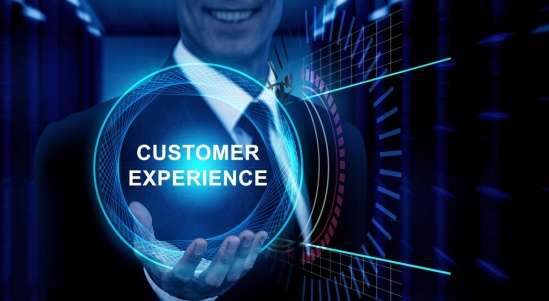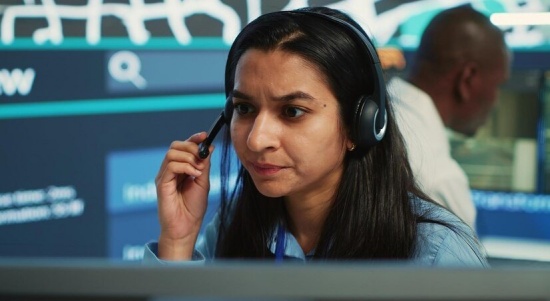- Resources
- The Ultimate Guide to CXO: What It Is and Why It Matters
The Ultimate Guide to CXO: What It Is and Why It Matters

The role of a Chief Experience Officer (CXO) has become increasingly important in today’s business landscape. As companies continue to focus on delivering exceptional customer experiences, CXOs are tasked with leading the charge and ensuring that every interaction a customer has with the company is positive and memorable.
A Customer Experience Officer (CXO) is the ideal person to lead the charge in both customer and employee experience and develop a customer-centric culture. But what exactly is a CXO, and what characteristics should you look for when selecting the best candidate?
In this article, we will delve into the realm of CXOs and investigate the essential characteristics that distinguish them as influential leaders in providing exceptional client experiences. Read along!
What Is a Customer Experience Officer (CXO)?
A CXO is a C-suite corporate executive who oversees a company’s total customer experience and interactions. A customer experience officer (CXO) often reports to the CEO, COO, or CMO. Of course, CXOs are also responsible for CX staff.
A CXO implements customer experience (CX) methods to create unique brand experiences that increase consumer loyalty and advocacy. The function now incorporates employee experience (EX), which ensures that staff exemplify the brand’s consumer promise and meet brand objectives.
A CXO collaborates closely with the change management, learning and development, and human resources teams. This important cross-functional communication improves employees’ comprehension of customer satisfaction and leadership’s perception of their people and employee happiness.
What Does A CXO Do?
A customer experience officer is a corporate executive who collaborates with businesses to improve customer experience. They serve as a firm’s customer ambassadors, developing client relationships, improving client relations, and promoting company growth.
A CXO serves the following five essential roles:
Catalyst: A CXO strives to ignite a cultural shift within the firm, encouraging a steadfast commitment to prioritizing the customer experience.
Champion: A CXO steadfastly advocates for customer needs and aspirations, ensuring that the company values each client and their journey.
Enabler of Customer Experience: A CXO equips the firm with the necessary resources and expertise to deliver personalized experiences that resonate with customers.
Designer: A CXO innovates and develops software solutions tailored to enhance the customer experience, leveraging the company’s unique capabilities and expertise.
Orchestrator: A CXO harmonizes various facets of business operations to deliver seamless and exceptional experiences for clients, ensuring consistency and excellence at every touchpoint.
Similarly, his responsibilities include:
- Strategic Leadership: The CXO oversees the company’s overall customer experience strategy. They make practical efforts to put ideas into reality, propelling the organization toward customer-centricity.
- Customer Representation: CXOs are the C-level executives who convey customer requirements and viewpoints to the C-suite. They ensure that the customer’s voice is heard at the top levels of the firm.
- Monitoring Metrics: Key performance indicators, like Net Promoter Score (NPS®) and customer satisfaction (CSAT), are more than just numbers to the CXO. They use these metrics to measure and continuously enhance the consumer experience.
- Team Formation: They are entrusted with assembling a specialist customer experience team. This team frequently includes professionals in analytics, design, and change management, all working to improve the customer experience.
- Aligning with Business Goals: The CXO works in collaboration. They seek to guarantee that customer experience strategies enhance satisfaction and contribute to overall business outcomes like revenue growth and cost savings.
- Operational Responsibilities: In certain circumstances, the CXO function has grown to include overseeing customer-facing operations staff as well as portions of marketing. This highlights the position’s dynamic and varied nature.
- Organizational Structure: The CXO job varies amongst firms. In some firms, the head of customer experience may report to another C-suite member, such as the CMO. In other words, the CXO plays a broader role, overseeing both customer and staff experience initiatives.
A CXO is responsible for delivering a consistent and excellent customer experience while simultaneously driving essential business goals. They function as the link between the customer’s needs and the company’s overall plan.
Why Should You Hire A CXO?
Providing a consistent client experience is critical. Customers will return to your firm if they know what to expect, which is a positive experience. The CXO is committed to providing an excellent experience across all customer touchpoints while ensuring that the brand message is constant. They can rapidly and expertly discover gaps in the buying experience and pain points that cause friction and hurt brand perception.
Here are a few more reasons why you should hire a CXO:
Improved Customer Retention
Most businesses invest significant time and effort into generating new leads and gaining new clients. According to studies, directing resources toward retaining existing consumers is more valuable. After all, acquiring a new customer costs five times more than retaining an old one.
CXOs bear primary responsibility for improving client retention. A customer experience officer can assist in attracting and keeping customers by monitoring the customer experience, tracking feedback and customer trends, and aligning the insights with the brand’s message or services.
Increased customer satisfaction
32% of all customers would stop doing business with a brand they loved after one bad experience
Furthermore, a good client experience might lead to favorable word-of-mouth online.
To provide a fantastic and consistent customer experience, a customer experience officer will examine individual touchpoints, your sales funnel, and the complete customer journey. And when a dedicated executive oversees the entire customer journey, it becomes easier to understand the “big picture” and give unified and consistent customer support.
Increase Efficiency and Productivity
Using data analytics technologies, customer experience officers can rapidly discover efficiency gaps in the purchasing process and provide advice on how to remedy them. For example, suppose it takes customers four clicks to go to the shopping cart and another three clicks to complete the transaction.
This creates tremendous friction. The corporation may be aware of this but believes there are more vital things to focus on. Using analytics, the CXO may determine the impact and ROI of enhancing this process.
Better customer service
Customer service is at the heart of a positive customer experience, so you should hire an expert to evaluate all elements of your customer interactions.
According to studies, customer service is responsible for most customer experience successes. 35% of respondents assessed their experience as successful since customer service was pleasant or helpful (35%), very competent or well-trained (27%), and empowered to help correctly (24%).
Only outstanding product quality ranked as high as these gratifying customer service experiences (25%).
A CXO can enhance customer service by influencing the following aspects:
- According to PwC research, 46% of customers would discontinue business with a company because of an employee’s lack of understanding. A CXO may manage and teach your customer service workforce.
- With a customer experience officer in charge, your customer service culture can encourage offering a personal touch rather than focusing primarily on speed and efficiency. Another PwC survey shows that two-thirds of consumers want more excellent human touch in customer support.
Increased brand loyalty
60% of customers are willing to take their business elsewhere if they do not obtain good customer service. The customer journey does not end with a single transaction; instead, it extends throughout a client’s life, motivating them to make additional purchases while helping to spread the word about your business.
According to a report, three-quarters of global respondents believe an extraordinary experience is one of the most critical factors influencing brand loyalty. This is why CEOs must strive to increase client loyalty. To ensure that customers stay loyal to your service, hire an expert to evaluate their needs, expectations, preferences, and views of their experiences.
What Should Be CXO’s Skills?
A customer experience officer should be informed, communicative, and empathetic—and that’s only the beginning. The following are the talents that any CXO should have:
- Data-Driven Decision-Making: CXOs must be able to acquire, analyze, and draw conclusions from data. Data gives significant insights into customer behavior, preferences, pain spots, and the efficacy of CX initiatives. CXOs must use data to make sound decisions, find improvement areas, and assess their strategy’s effectiveness.
- Strategic Vision: CXOs must have a vision that includes long-term goals and is consistent with the organization’s mission. They must see the big picture and develop strategies to propel the organization toward its customer experience goals. This includes recognizing market trends, opportunities, and potential disruptions.
- Change Management Expertise: CXOs frequently drive significant organizational changes to align the company with a customer-focused culture. They must excel in change management, assisting people in understanding the reasons for change, overcoming resistance, and skillfully navigating the organization through transitions.
- Customer-Centric Mindset: The CXO’s position is fundamentally customer-centric. CXOs must sincerely believe in the value of providing excellent customer experiences and promote this approach throughout the business. They act as custodians of the customer’s voice, championing their wants and preferences across all choices.
- Technology Proficiency: Technology is critical to providing personalized and efficient client experiences in today’s digital world. CXOs must be technologically knowledgeable, with a solid understanding of customer relationship management (CRM) systems, data analytics tools, automation platforms, and emerging technologies that can help CX projects.
- Resilience: Leading customer-centric initiatives can be challenging, and CXOs may face barriers and setbacks. Resilience enables CXOs to recover from adversity, stay focused on long-term objectives, and remain committed to providing excellent customer experiences.
CXO Vs CMO Vs CEO
While a CXO, a CMO, and a CEO all function at the executive level in an organization, their roles and responsibilities are widely different from one another.
Let’s understand the differences between these job roles in detail:
| Aspect | CXO (Customer Experience Officer) | CMO (Chief Marketing Officer) | CEO (Chief Executive Officer) |
|---|---|---|---|
| Responsibilities | Focuses on overall customer experience and satisfaction. Responsible for ensuring a positive interaction between the company and its customers across all touchpoints. | Primarily responsible for developing and executing marketing strategies to promote the company’s products or services. Focus on branding, advertising, and market positioning. | Holds the highest executive position in the company. Responsible for overall strategic direction, decision-making, and ensuring the organization’s success. |
| Focus Area | Customer experience and satisfaction. Enhancing the overall journey and interaction with the brand. | Marketing strategies, brand development, advertising, and promotion. Driving customer acquisition and retention. | Overall corporate strategy, organizational leadership, and achieving financial goals. |
| Key Metrics | Customer satisfaction, Net Promoter Score (NPS), customer retention, and overall customer feedback. | Return on investment (ROI) for marketing campaigns, customer acquisition cost (CAC), brand awareness, and market share. | Financial performance, shareholder value, overall company growth, and market capitalization. |
| Collaboration | Works closely with various departments such as customer support, product development, and sales to ensure a seamless and positive customer experience. | Collaborates with sales, product development, and other departments to align marketing strategies with overall business objectives. | Collaborates with executive leadership, sets the company vision, and ensures alignment across all departments. |
| Skills Required | Strong understanding of customer behavior, empathy, communication skills, and ability to drive organizational change for a better customer experience. | Strategic marketing expertise, creative thinking, data analysis, leadership, and communication skills. | Leadership, strategic thinking, decision-making, financial acumen, and the ability to navigate complex business environments. |
| Reporting Structure | Reports to the CEO or another high-level executive. | Reports to the CEO or another high-level executive. | Typically reports to the Board of Directors, if applicable, and is the top executive in the organization. |
How Does CXO Improve Customer Experience?
Predictive analytics uses past data and complex algorithms to estimate future trends and behaviors. CXOs utilize these insights to predict consumer wants and fix issues before they occur.
For example, examining historical purchase trends might help businesses forecast when a consumer will likely make a repeat purchase, allowing them to send appropriate reminders or offers. This improves client happiness and increases revenue through higher customer retention and repeat business.
Here are some other ways through which a CXO improves customer experience:
Develop a clear customer experience vision
The first step in developing a customer experience plan is establishing a clear customer-focused vision you can share with your organization. The simplest method to define this vision is to write a series of statements that serve as guiding principles. Once these principles are established, they will guide your organization’s behavior. Every team member should know these concepts by heart, and they should be incorporated into all aspects of training and development.
Understand who your customers are
The next stage in developing these customer experience standards is to illustrate the various types of customers interacting with your customer care teams. If your company is going to truly grasp client demands and desires, it must be able to connect and sympathize with your customers’ difficulties.
One approach is to segment your clients and develop personas (or customer profiles). Try giving each persona a name and personality. For example, Anne is 35 years old; she enjoys new technology and is technically intelligent enough to follow a video tutorial independently, whereas John (42 years old) must be able to follow precise directions on a web page.
Develop an emotional connection with your customers
Have you heard the term, “It’s not what you say; it’s how you say it”?
The best customer experiences happen when a staff member forms an emotional connection with a customer. According to research published in the Journal of Consumer Research, emotions form the attitudes that drive decisions, accounting for more than half of the experience.
Customers stay loyal because they are emotionally invested and recall how they felt when using a product or service. A company that aims for emotional connection outperforms its competition by 85% in revenue growth.
Use a quality framework to build your team
By following the processes outlined above, you will now understand what customers believe about the quality of your service concerning the customer experience standards you have developed. The next stage is to determine the training requirements for each customer care team member.
Many firms evaluate the quality of phone and email communication; however, a quality framework goes a step further, scheduling and measuring your team’s progress through coaching, eLearning, and group training.
Act on regular employee feedback
Most corporations conduct an annual survey to gather overall feedback from their teams, including their engagement and the company’s capacity to provide excellent service.
But what occurs during the 11 months between these survey periods? Usually, nothing.
This is where constant employee feedback may help by allowing employees to submit ideas on improving the customer experience while also allowing management to understand how employees feel about the company. For example, you can build a closed environment where your organization can provide ongoing input by utilizing project management software or social media tools.
Personalize the experience
Did you know that over 40% of customers want to receive tailored adverts based on their interests?
You may improve customer satisfaction by personalizing experiences to your client’s requirements and preferences. We advocate employing customer data and analytics to gain insights into their previous interactions, preferences, and purchasing history. Use this information intelligently to tailor your communications, recommendations, and targeted offers.
Develop a seamless omnichannel experience
Your clients want a seamless experience across several touchpoints and channels. In fact, around 73% of shoppers prefer using numerous channels for their purchases. That’s why you must ensure that your customers can constantly connect and engage with your organization, regardless of the platform, channel, or device they use. It is also strongly advised that you adopt techniques that allow for seamless transitions between platforms, such as synced communication, a single customer database, and integrated customer support.
Challenges CXOs Face
A CX manager must overcome several challenges to provide an exceptional customer experience, including managing complicated communication channels and coping with shifting customer expectations.
Here are some of the most significant customer experience problems that a CX manager may expect to face while operating:
- Friction from Top Executives: Some executives may favor short-term earnings over long-term customer happiness, resulting in decisions that harm customer experience. This can include cost-cutting methods that impact customer service quality, product features that do not meet consumer needs, or marketing campaigns that are not customized to the target demographic.
Furthermore, some executives may need to pay more attention to the value of a pleasant customer experience, resulting in a lack of support for CX projects and investments, making it difficult for the CX manager to oversee and implement customer-pleasing activities.
- Absence of Required Tools and Technology: Effective CX management necessitates using specialized tools and technology to collect, analyze, and act on customer data. However, many firms may need more infrastructure, resources, or cash to adopt and maintain these tools, making it difficult for the CX manager to manage client interactions and provide a positive customer experience.
- Poor Consumer Data Quality: Customer data may need to be included, accurate, or updated, leading to incorrect assumptions about consumer preferences and behaviors. This can lead to poor marketing efforts, irrelevant product suggestions, and inadequate customer assistance, all of which impede a CX manager’s desired outcome. Poor data quality can also result in missed opportunities to improve the customer experience, as key insights and trends may be missing.
- Resistance to CX Transformations: CX transformations involve significant changes to a company’s operations, such as adopting new technology, revamping business processes, or implementing a new CX governance structure that prioritizes customer needs. Employees may resist change because they believe it will interrupt their jobs or lack the skills or resources to adapt to new ways of functioning. Customers may also resist new products or services, preferring the status quo. Eventually, this raises difficulties for a customer experience manager.
- Organizational silos are boundaries that exist between distinct departments or teams within a company, limiting communication, cooperation, and information sharing. When departments work in silos, they may not share the same CX goals and may prioritize their aims over the overall customer experience. This might result in fragmented customer experiences, in which customers receive inconsistent or conflicting information or encounter extra barriers during their interactions with the organization.
Trends In CXO Hiring In 2024
Here are some key trends that will be driving the CXO hiring process in 2024:
Hyper-Personalization
As we enter the new year, hyper-personalization will become a business’s strategic imperative. Furthermore, the convergence of customer data accessibility and advanced technologies will propel personalization into an essential component of customer experience strategies. C-level executives must leverage data-driven insights to provide personalized recommendations, exclusive deals, and one-on-one interactions. Furthermore, they must strike a delicate balance between customization and ensuring customer privacy.
Omni Channel
When we analyze the business trends emerging in 2024, achieving omnichannel harmony has become increasingly important. Businesses must create a consistent brand identity across all customer interaction channels, ensuring consistent branding, messaging, and service quality. Furthermore, the need to provide a fluid, omnichannel experience extends beyond merely presenting across several channels. It is essential for businesses that want to thrive in 2024 and beyond.
AI-driven Interactions
Businesses continue incorporating AI and machine learning into customer service operations, emphasizing emotional intelligence. AI-driven interactions should be both efficient and human-centered. CXOs must, therefore, focus on incorporating AI systems that are capable of understanding and reacting to customer emotions. This entails employing sentiment analysis, natural language processing (NLP), and empathy algorithms to improve the emotional resonance of customer interactions. Finally, this results in a more authentic and engaging customer experience.
Virtual and Augmented Reality
Augmented Reality (AR) is expected to reshape customer experiences across industries, making it one of the top business trends in 2024. Businesses may leverage augmented reality to create immersive experiences. It also enables clients to embark on trial experiences, visualize things in their surroundings, and interact with them in novel ways. Furthermore, this trend will necessitate investments in cutting-edge technologies and content designed specifically for these emerging AR experiences. It should consequently provide a one-of-a-kind and memorable consumer experience.
Conclusion
A Customer Experience Officer is a key executive who helps shape a company’s approach, culture, and operations around the customer experience. As customer expectations change swiftly, having a CXO with the proper attributes is more crucial than ever for firms looking to provide differentiated brand experiences while being competitive and relevant in today’s market.
The CXO will foster cross-functional collaboration and a customer-centric corporate culture by combining a visionary approach and empathic qualities. Also, hiring one ensures you have a potent change agent in your company who knows your clients better than anyone else and thoroughly understands your business goals.
Want to see what Ozonetel can do for your company? Sign up today for a free 21-day trial.
Prashanth Kancherla
Chief Operating Officer, Ozonetel Communications
Over the past decade, Prashanth has worked with 3000+ customer experience and contact center leaders...
Chief Operating Officer, Ozonetel Communications
Over the past decade, Prashanth has worked with 3000+ customer experience and contact center leaders to comprehensively understand the need for effective and efficient customer communications at every step of their journey with a brand. Deeply embedded in today’s CCaaS ecosystem, he has been instrumental in Ozonetel's growth and contributed in various roles including product management, sales, and solution architecture.







